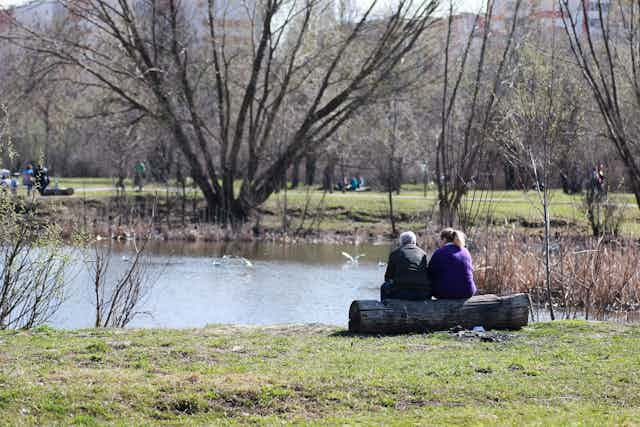This is the fifth article in our Contested Spaces series. These pieces look at the conflicting uses, expectations and norms that people bring to public spaces, the clashes that result and how we can resolve these.
The urban environment can have significant impacts on healthy ageing of older people, including how they enjoy and participate in their local community. Our recent research has identified that older people living in high-density Brisbane actively engage with well-designed neighbourhood public space.
Participation, interaction and physical activity hold the promise of promoting health and independence and reducing the risk of disablement for older people.
Our participants identified several key design considerations that help make public spaces usable and comfortable places. Many of these aspects are linked to walkability.
Successful public spaces become well-used venues for extending daily life beyond the home. But when public spaces are not well designed and maintained for everyday use and comfort, and their needs are not met, older people are discouraged from getting out and about.
What do older people want?
Our survey participants identified the key factors as:
A wide variety of places for people to sit, to enjoy being out in public and watching people. Usable, universal design seating – rather than having to sit on the grass – is especially important for older people as rest-stops or destinations given their declining physical flexibility.
Hand rails on stairs and steep paths for safety and confidence.
Drinking fountains and trees to provide shade and comfort. A tree canopy provides comfort and protection from heat, humidity and sun exposure. This is especially important in a sub-tropical climate like Brisbane’s.
Plentiful and clean public toilets. The lack of such facilities can be debilitating and an obstacle to some older people’s enjoyment of the public realm.
Wider walk paths and safer buffers between pedestrian paths and high-traffic roadways. In some areas, footpath and streetscape treatments could improve safety. An example would be to use trees and parking lanes to create a buffer between pedestrians and traffic.
Safer and clearly posted pedestrian crossings on busy thoroughfares to avoid or reduce the risk of pedestrian and motorist confusion at intersections. Older people avoided walking in some urban areas because of concerns about crossing roads with fast-moving traffic and little pedestrian amenity.

- Clearer delineation on paths between areas for cyclists and runners and those who tend to move more slowly, such as older people and children. An example of where participants were uncomfortable was when the “strollers” must compete with numbers of runners and cyclists using shared paths. Such infrastructure is shared with all segments of the population; the challenge is to design for all competing demands so no-one is excluded.
Our research found it is the interplay of these needs that is important in activating public space for older people. We need to make these areas welcoming, comfortable and active. This requires spaces for people to walk, sit, people-watch and relax.
Why do inclusive spaces matter?
The benefit of good public space amenities in high-density neighbourhoods cannot be overstated. These features in public spaces are essential for older people’s participation and interaction in public – and indeed for everyone.
Our research highlights the potential impact these issues have on healthy ageing for older residents of high-density neighbourhoods. It gives us a better understanding of the design factors that make these areas more liveable and sustainable for older people.
The findings can help inform practical policies, programs and urban development design to help promote liveability, social engagement and healthy ageing in high-density neighbourhoods. This, in turn, can help preserve the independence and wellbeing of our ageing population.
The World Health Organisation promotes healthy ageing as the ability to live an active, safe and socially inclusive lifestyle.
As the world continues to urbanise, various levels of government, the private sector and the community will need to work together to respond to the needs of older people. Issues of ageing in Australia and other parts of the developed world will become more critical in coming decades.
Current planning and development processes present several barriers to the provision of age-friendly infrastructure. Given the growing number of older people, and thus their increasing political influence, successful governments will need to respond to their needs and, in particular, the need for supportive social and physical environments.
You can read other pieces in the series as they are published here.

